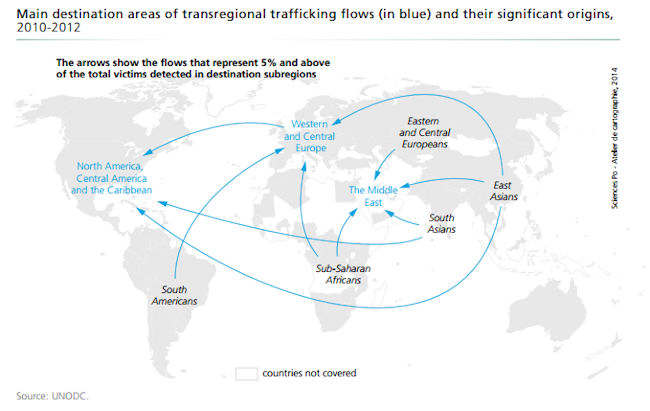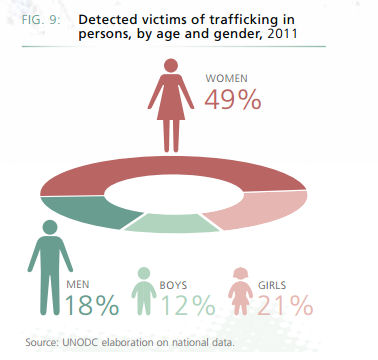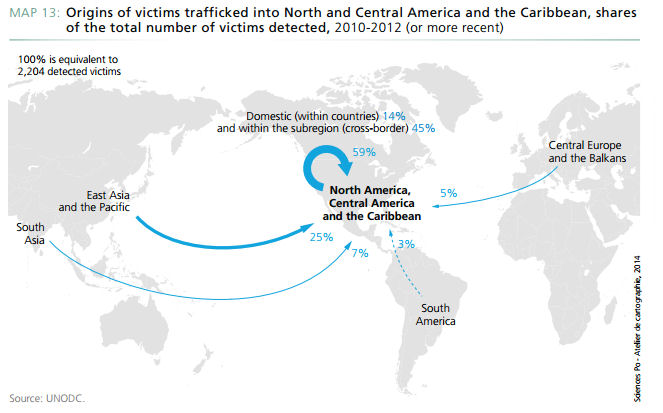
By Guest Contributor: Brian Kent
Most readers are likely aware that human and sex trafficking is a serious problem in countries such as Thailand and India. In fact, Asian women are the most trafficked group worldwide. But, readers may not know that human and sex trafficking of Asian women is a large problem here in the United States, as well. While abuse lawyers like those at AbuseGuardian.com can help victims of human and sex trafficking take legal action against their captors, trafficking is an issue that has sadly gone widely unnoticed in America.
70% of human trafficking victims worldwide are girls or adult women. Asians and Pacific Islanders (API) are disproportionately trafficked into sex work in America. Although APIs represent roughly 6% of Americans, nearly half of trafficked people into America are API, making APIs the second largest group of human trafficking victims in the Americas, and the largest group of people trafficked into the region. According to a 2004 U.S. Department of Justice report, 7,800 Asians and Pacific Islanders were trafficked into America out of an estimated 14,500-17,500 trafficked people. More recent reports from the United Nations Office on Drugs and Crime show that more than 1 in 3 human trafficking victims in Northern and Central America originated from East Asia, South Asia or the Pacific Islands, and most of them are trafficked to the United States or Canada.

Defining The Problem
Trafficking of a people is defined as the transportation, recruitment, transfer, harboring or receipt of people by means of threat or the use of force or other forms of fraud, deception, coercion, or abduction.
The purpose of trafficking is to exploit people for use in forced labor, sex work, and/or even the removal of organs for the purpose of selling them.
Sex trafficking is a subset of human trafficking, and more than half of human trafficking victims worldwide are trafficked for the purposes of sexual exploitation.
Trafficking And Abuse By The Numbers
This horrific form of modern-day slavery is far more prevalent than most would assume, yet little attention is focused on this global issue. Here are some facts and figures that may surprise you.
- Globally, there are 36 million victims of human trafficking.
- Sex trafficking is the third-fastest growing trade in the world.
- Between 100,000 and 300,000 people are trafficked for sex work in the U.S.
- Half of the people trafficked into the United States each year are children.
- Sex trafficking generates $99 billion in revenue each year.
Sex Trafficking Of Asians In America

The issue of human and sex trafficking in America is inextricably linked to the history of Asians in America. Some of the earliest documented cases of human trafficking specifically for the purposes of sex occurred in the red light district of San Francisco during the gold rush of 1849. Young Chinese girls were brought to an area called the Barbary Coast and forced into prostitution. According to historians, many of these women were fed opium by their traffickers in order to ensure their compliance. When these women aged enough to be considered “unattractive,” some were placed in a room with enough drugs to overdose. If they chose not to overdose, they either starved to death, or were murdered.
Currently, Asians — predominantly Asian women — are being trafficked into America at alarming rates. According to the United Nations, 80% of female victims of human trafficking are exploited for sex, and nearly half of human trafficking victims identified in the Americas have been forced into sex work. Many of these victims are forced to perform sex acts under the cover of employment at superficially innocuous places of business, such as motels and hotels. Because these places of business blend so easily into day-to-day life, human and sex trafficking can often go unseen for years.
Captors and traders of sex slaves use a variety of methods to obtain and keep sex slaves:
- Force: by isolating and supervising the victims, or by physically or sexually abusing victims, sex workers are forced into sex acts.
- Coercion: by confiscating travel documents, charging exorbitant amounts of money for food, shelter, and protection, and by inhibiting communication with family and friends, victims are coerced into feeling that non-consensual sex work is their only way to survive.
- Fraud: by telling victims they will be working in a different profession, by creating fake visas to transport them, and by promising an improved life, victims are tricked into trusting their captors.
What Is The U.S. Government Doing To Help?
There are a number of laws that are currently in place to protect victims of trafficking and to prevent human trafficking from happening now and in the future.
- The Mann Act: prohibits transportation of persons across state and country lines for the purpose of sex work.
- Trafficking Victims Protection Reauthorization Act of 2013: among other provisions, this act bans the U.S. from importing goods made with the labor of people who have been trafficked.
- The Survivors of Human Trafficking Empowerment Act: introduced to the House in January of 2015 by US. Representative Mike Honda, this act established the United States Advisory Council on Human Trafficking. That Council is required to meet at least once annually to analyze and assess the government’s progress in combating and preventing human trafficking, and its establishment was described earlier this year as a “major victory” for the trafficking survivors community.
5 Things You Can Do To Prevent Trafficking And Abuse
- Go to SlaveryFootprint.org to see how many of the items you use in your everyday life have been made with slave labor.
- Attend a human trafficking awareness training to learn the warning signs and red flags that indicate someone is being trafficked. (You can also read about the warning signs online here).
- Raise awareness about the problem of human and sex trafficking in America. Share stories about the issue through your social network. Talk to your local school board to see about including human trafficking information into curriculums in your district. Specifically, aim to get curriculums to include literature on how traffickers target children.
- Save the number for National Human Trafficking Resource Center (1-888-373-7888, a national, toll-free hotline for reporting human trafficking) in your phone so that you can be prepared to report red flags.
- Research an anti-trafficking organization that you can donate to.
Also, you can learn more about the global human trafficking epidemic by reading the United Nations’ comprehensive report on worldwide human and sex trafficking.

Before representing sexual assault survivors in cases of civil liability, Brian Kent, Esq. served as a sex crimes prosecutor in Pennsylvania, working for the Montgomery County District Attorney’s office. An attorney with more than 10 years of legal experience, he is a lead sponsor of AbuseGuardian.com.
Learn more about Reappropriate’s guest contributor program and submit your own writing here.

